February 16-24, 2019
We spent 5 days in Churchill in the middle of winter. Yes, it was cold. Very cold. Most people come to Churchill in October or November to see polar bears. Or in the spring to see beluga whales. We came in February, with Natural Habitat, to see the Northern Lights, the Aurora Borealis (please see that post). But of course we also got to know the town of Churchill (please see that post).
For a small town of only about 800 people, Churchill is full of art. On June 16-26, 2017 the Pangea Seed Foundation, an international marine conservation organization, together with Kal Barteski, founder of the Polar Bear Fund, hosted a festival called Sea Walls: Murals for Oceans in Churchill. The idea behind the project was to bring in recognized public artists to learn about how a remote community, like Churchill, faces the many challenges of living on an ocean coast. By creating large murals, they would change the visual landscape and thus inspire conversation about protecting the oceans. But like many projects of this magnitude, it ended up inspiring the devastated small town, here on the edge of the Arctic, to appreciate their own place in the world. This project brought education about environmental issues, but it also brought beauty to the town. I must add that Churchill was already beautiful. The glistening snow. The sunsets. The trees. The wildlife. But the Sea Wall project brought color and meaning to the many empty, large walls of the buildings of Churchill.
Eighteen artists from around the world were invited to paint these large murals. Each explored the history of Manitoba and highlighted the eco-regions particular to this part of the world – the tundra, taiga, boreal forest and the Arctic Ocean (please see the post on Churchill to learn more about these).
A Town Abandoned
Like with so many large-scale projects, this one turned out not to be so simple. While never easy to get to Churchill, it was particularly difficult this time. Normally, the only way in and out is either by train or by plane (and even that not very often). That winter, the town experienced two unseasonably severe blizzards and when spring came, all that snow and ice melted causing floods that washed out and destroyed the railroad. As many said, the “town was left without the rail, without support and without hope.” The townspeople were not sure it would ever be fixed. The port closed. Jobs were lost. They were trapped. They felt that the rest of Canada and the Canadian government had abandoned them. Flying was the only way in, both for people and for goods. Prices skyrocketed. Buying the basic necessities became difficult. As an example, the price of milk went up to $13 a gallon. Everyone thought, “What will happen next?”
And yet, the artists made their way from around the world, bringing what art supplies they could carry on the small planes, and then having to make do with what they could find in Churchill. The needed equipment, like four fork lifts, scaffolding, rollers, brushes, ladders, buckets and 500 cans of spray paint had to be left behind. They had to basically make do with one fork lift which they shared, and paint and brushes donated by the Churchill community.
In order to make their murals relevant, the artists spent time getting to know the locals before they started to paint. Then they spent two weeks painting with the intention and purpose of bringing attention to the protection of the ocean. But, as it turned out, the artists were the ones that had to be protected, because they were painting during polar bear season. Bear guards had to be present at all times. The locals volunteered and became the artists’ protectors. And the whole while, crowds gathered each day to watch.
And in that way, the artists and their murals not only taught the world about protecting the ocean, they taught the world how to appreciate and protect Churchill.
We got to see most, but not all of the murals. Below are my photos along with stories and quotes from the artist who created the mural.
Know I’m Here
The most famous of all the murals is the, “Know I’m Here” by Georgia Hill from Australia. Georgia said of her mural: “My artwork for Sea Walls Churchill focuses on climate change and its impact on our sense of place. Churchill as a town has been struggling through the direct consequences of melting sea ice, blizzards and flooding, affecting not only people’s livelihood and morale, but also the future of the unique sea life the town works alongside. My goal was to create an artwork that subtly references the sea ice of Hudson Bay, along with the rock textures of Inukshuks built by Canada’s indigenous people, which are used to navigate and reference land, water and locations. The phrasing ‘Know I’m Here’ creates a strong message of valuing the people of Churchill, but also communicating to all people that we need to read the water and world around us in order to know our place and take actions to nurture what we have been given.
“Know I’m here” became the new slogan for Churchill. Kal Barteski, the organizer, documented the whole Sea Wall art project in an hour long movie called “Know I’m Here.” If you want to see it, check out http://handcraftcreative.com
The Power of Nature
Arlin Graff, from Brazil, painted a deconstructed polar bear which he felt represented an attempt to fix what we humans were destroying in nature. The bear was on the side of a building which had three levels at the roof line. The mural was situated in such a way as to look like the bear was just sitting there taking in the world, or what was left of it. “Painting them in large scale is a friendly way of asking for respect, and making people feel small when faced with the grandeur of nature.” It worked. It made me think of the magnitude of nature, and of the bears. And I did feel small.
The Last Winter
This mural, by Dulk (Antonio Segura Donat) of Spain (with only one name), shows the decay and death of polar bears. It was hauntingly beautiful. Dulk said, “As a family of polar bears and belugas make their last winter journey on earth, the cub held on to its treasured iceberg, which illustrated the threat of polar bears survival due to the increased melting of the Arctic.
Encounters at the End of the World
We saw this mural from our mini-bus so did not really have a chance to look at it carefully and contemplate the meaning. Kelsey Eliasson, in his blog, describes himself as, “…a polar bear guide, artist and essentially unemployable in the real world which is why he spends most of his time in the north.” He describes the bears in his mural as, “bears stand as a record of Churchill as it is today, they are based on real bears that I have met over the years…As the two first bears weather and likely disappear, the ever-present beluga whales will emerge to take their place as the focal point of the place. The third bear will also remain, as a somewhat mysterious and judgmental figure.”
Human Nature
Askew One, from New Zealand, named this mural “Human Nature” to signify a universal excuse to justify everything we are doing wrong in this world – you know, like ‘it’s just human nature to…’ [insert miscellaneous bad thing here.] But hsi si also a play on Human and Nature – the precarious balance between the two. Churchill is a town where this is the underlying drama at all times. It’s a town so dependent on the natural environmnet and its wildlife and is simultaneously threatened by it too. Everything in Churchill has a duality, a total double edge to it. The text on the mural illustrates this tension and also draws from the parallels in texture of both the natural and industrial environments of the town.”
As a side note, Askew had to travel through 5 countries to get to Churchill. It took him three days to paint his mural and he had to do it standing on a flat deck attached to a fork lift because that was the only option.
The Final Destination
This mural was painted by Stormy Angeconeb from Canada, who was only 18 years old. “I wanted to pay homage to the more than 250 species of birds in the Churchill area.”
The Rope
This was one of my favorite murals. Case Maclaim, from Germany, used local characters in authentic gear and staged a photosh oot to use as a reference in creating his mural. He describes the mural, “The piece describes the present-day situation of living in an area of the world that is both dependent on nature and suffering from a man-made tragedy. It addresses the melting permafrost which is unsuitable for building infrastructure on, such as railways. In addition to this, massive storms and flooding are washing away the railroads making them unable to use for transportation of goods and people…My painting touches on the issue of the railway, by showing port workers balancing like tightrope dancers on the washed away railway. It stands as a metaphor for how fragile life can be in subarctic terrain and how essential the railway is for the survival of the people.”
I stood there a long time looking at the mural from all sides. This one was painted on the corner of the wall so from different angles it looked quite different. I walked up a small hill and got a different perspective from being up a bit higher. No matter how you looked at it, it was a beautiful, moving piece of art.
Another Polar Bear – Untitled
On the same building, around the corner, was a large mural of a polar bear painted by Li-Hill, originally from Canada, but now in Brooklyn. The bear was beautiful as it looked down right at us.”On my last day in Churchill this wall called me. I managed to put this image up that has haunted me for years now. Calling out amid extinction, the silent roar dissolving into the fog of memory.” Li-Hill created this mural in less than six hours in the rain, using the last of the available paint supplies.
On the Brink
Li-Hill also painted another mural, called On the Brink. He used photos he had taken of Canadian Eskimo dogs. “For my piece, I have depicted two scenes, a local conservation officer from the town and a flurry of polar bears, Arctic sleigh dogs and/or wolves. Poised to shoot cracker sheels, the main tool to scare off bears, the uniform and stance of the officer allude to times of hunting and stand for human aggression. In the context of town and specifically the recycling center where this mural was painted, the interaction between bears and conservation officers are extremely common and the reading of this piece becomes more specific. The tension between human societies and the natural environment is a re-occuring theme in my work. Instead of man vs. nature here, it is two sides of the same coin. Both humans and endangered species are in a state of fight or flight. A heighten sense of emergency due to climate change and the long list of global issues place everything in a precarious position. In a town such as Churchill the tensions are local but the story is global.”
We did see this one, but alas, I do not have a picture.
#Camp10
This mural was different from all the others in that it had nothing to do with saving the oceans, but rather had everything to do with telling the story of the Dene people who were forced off their land. There is more about this sad part of Canada’s history on the post on Churchill, but briefly, the Sayisi Dene First Nation Aboriginal peoples of Canada were forced to move off their land where they had lived for generations hunting caribou and were forcibly relocated to Churchill. They had to try to adapt to city living, children were taken away from parents, they were not allowed to speak their language, alcoholism became rampant and their culture was all but lost. The government of Manitoba later said that “the tragic decision to relocate the Dene community at Duck Lake was due to incorrect assumptoms from wildlife officials who thought the Dene’s traditional practice of hunting caribou was hurting the herds.” Too little, too late.
Jason Botkin, from Canada, stated that the mural is a homage to #camp10 and the Dene. The mural has some stylized caribou antlers carried away on a river of ribbons. Hands of a skeletal figure are offered up in prayer. And at one end is a quote from Elder Betsy Anderson (Tadule Lake, Manitoba), “There was a time when all the people and all the animals understood each other and spoke the same language.” (“Yanízį Denesųłiné chu tįch’adíe įłághe yati hot’a ʔełnedárení hél tth’i ʔełedárí tth’agh nisnį.”)
Pump
Further out of town, across from the “Know I’m Here” mural, is the Lake Pumphouse where water is heated and then sent via hot pipes to the homes of Churchill. This is the one spot where you see more green growing. On the Pump House is a mural by Takashi Iwasaki from Japan. His piece was inspired by the fact that it is this building that supplies water to the whole area. He said, “My artwork addresses the circulation of water in the world in connection to the Pump House on which my mural is painted. The water travels from the Pump House to the faucet, to the people, back to the ocean, plants and back to the Pump House again. We are all connected and depend on the health of our water supplies and sources to survive. Simply put, water is life.”
We Swim in the Same Waters
I found this mural particularly moving. I stood in front of it for quite a while. The colors, the deep green and blue of the ocean, and the purple growing out of the green, were very soothing. And there was so much to see. Where ever you looked, you found something you had not noticed before.
Charlie Johnson, from Canada, had this to say about his mural, “Spirit in the water, spirit in the sky, spirit on the earth, all are connected. My piece is about ancestral legacy, which was passed on to us and what we will leave for our children’s children. She may be the Creator or Sedna the Inuit goddess of the sea. She may be Jessie Tootoo, a healer or a grandmother. Whoever she is, from her open hands the Aurora is unleashed, the ethereal cosmic voice of the ancestors speaking to us. The beluga swims through the aurora, a spirit guide legacy reminding us of what is truly valuable and worthy.”
The people of Churchill also connected to this mural. It reminded them of Danica de Laroque. Danica and her family were from Winnipeg and were visiting Churchill to see the beluga whales. As they watched the whales, and Danica was singing “Baby Beluga,” their canoe capsized and while the others were saved, Danica died in the frigid water. Her mother started Danica’s Village which adopted Churchill. Since everything was so expensive in Churchill, they started the Danica Food Bank and the local Hardware Store donated space. Everything there is free. If you think you need it, you take it. If you don’t, you give it back.
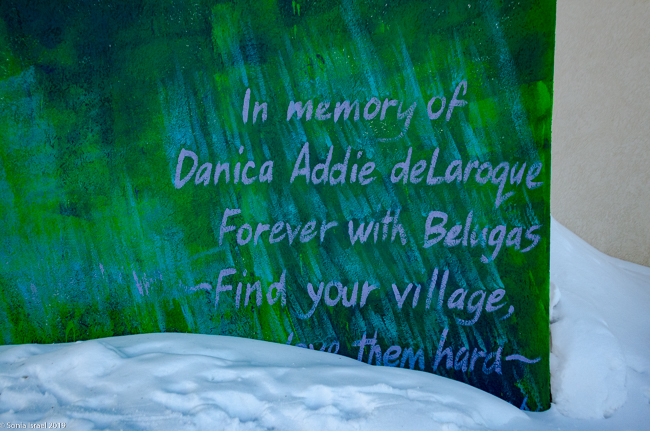 Charlie Johnson dedicated his mural to Danica.
Charlie Johnson dedicated his mural to Danica.
One lone mural – The Polar Bear and the Dog
There was one more mural that I captured. But it does not seem to be a part of the festival, as I could not find out who painted it nor what it was called. It was of a polar bear and a dog who were friends. This may have been in homage to Brian Ladood who owned a large piece of land on the Hudson Bay where he had many, many Canadian Eskimo Dogs (Inuit dogs or qimmiq). Because of the location, the polar bears often came onto his land and would interact with the dogs. He and his dogs were very controversial in the town, in part because he had so many dogs, all of who had to be chained as they were not particularly friendly dogs, and also because he would charge tourists to come see them and the bears. A documentary about Ladood, “The Last Dogs of Winter” suggested that Ladood’s mission was to preserve and breed this rare breed. As the director said, “His efforts have inspired both admiration and fierce criticism, largely because Ladoon’s dogs share their pitiless natural environment with itinerant wild polar bears, and his practices are seen by some to be inhumane.” We saw that documentary on one of the nights we were waiting to see the Aurora, but in all honesty, I was running in and out to see the lights, so I didn’t follow the whole story. I did sense the controversy over his practices, but I also learned that he did have friends and supporters in town as well. My guess it that after he died, this mural was painted for him.
Peace + Circumstance
Kal Barteski, the organizer of the Sea Walls project, is also an artist and painted the last mural we saw before leaving Churchill. Kal Barteski’s mural takes up the whole side of the polar bear holding facility (please see my post on Churchill to learn more about this). The shape of the building totally lent itself to the mural of the sleeping bear. “The location of this bear, on the polar bear holding facility, highlights the intensity and necessity of wildlife management along polar bear migrations paths where polar bears, the largest predators int eh world, continue to adapt to the shameful realities of our consumer-driven culture.”
Saving the Oceans. Saving Churchill.
When asked about the festival, Kal said, “Polar bears are directly affected by the unprecedented melting of sea ice and subsequent habitat destruction at an alarming rate, resulting in a big challenge for the species to survive. What many people don’t realize is that polar bears spend the majority of their lives on sea ice and for that reason, they are considered a marine mammal. This is why our collaboration with Sea Walls is so important. We want to generate consciousness through the power of art.”
She continued, “For me, the festival was exceptionally meaningful. It was important to me to show the Town of Churchill a glimpse of my gratitude. I’ve been welcomed into their community since I started visiting in 2011 and I’ve found powerful inspiration and purpose in my experiences with polar bears (and polar bear people). It was important to me to give thanks and give back. Initially, my hope was that the festival would leave the community with an opportunity to create a mural tour and generate another source of tourism income, but what we experienced while we were painting was a beautiful shift of the morale. It has been a devastating period for the small town that relies on the rail for so much of their daily life – having the artists and the energy from the festival made a remarkable change in their outlook – and ours. I am excited to see if the murals have a long-term effect. I hope to get back there to add to the collection and help the community in any way I can.”
And indeed, two years later, the murals still have a great effect on the town, and on us as visitors to this magical place.
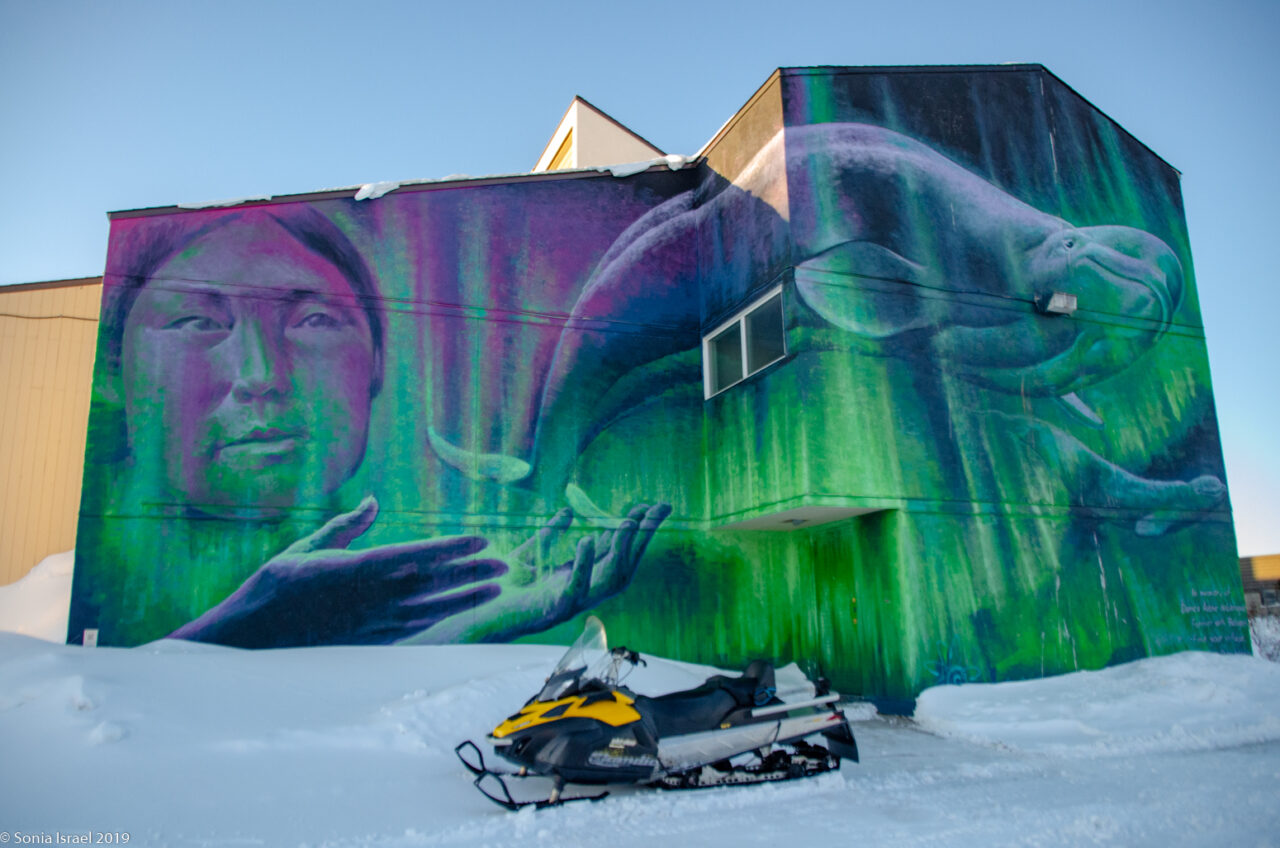
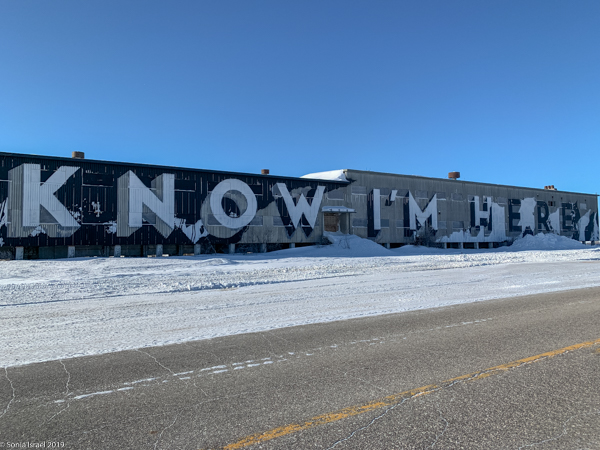
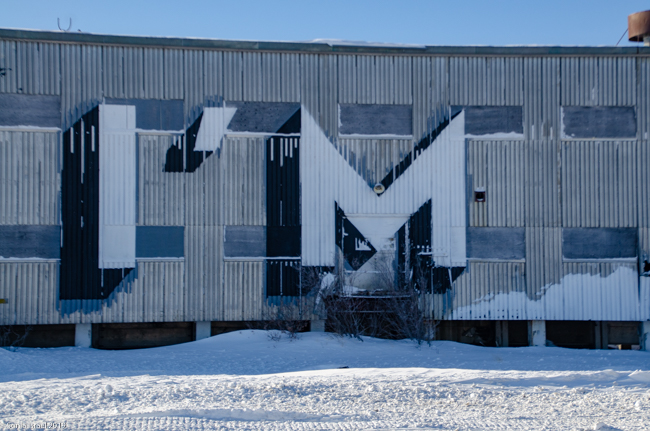
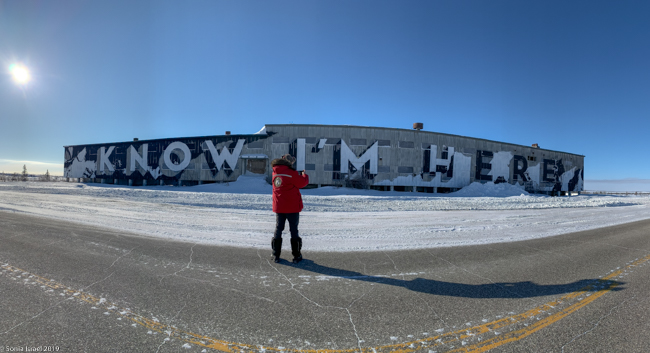
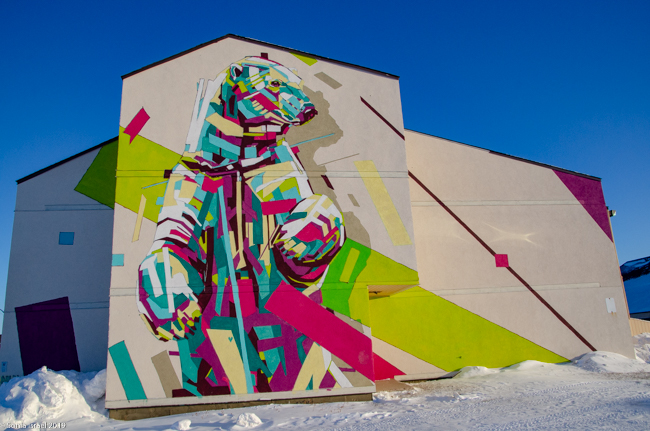
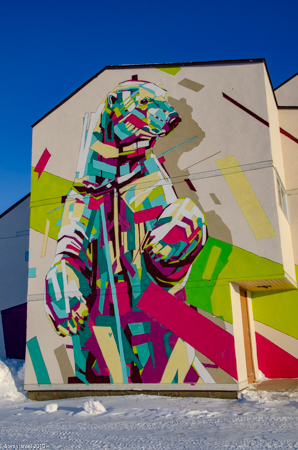
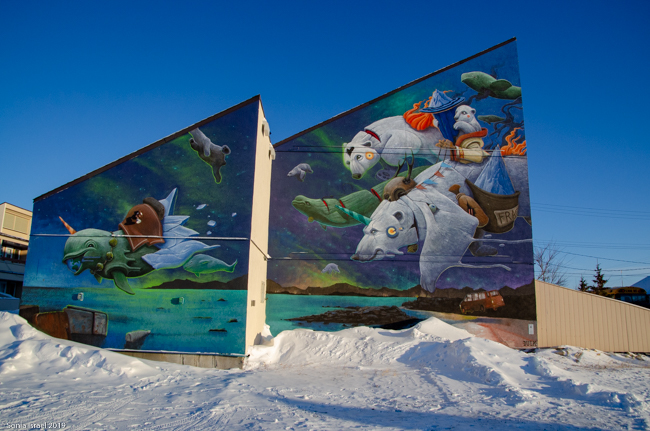
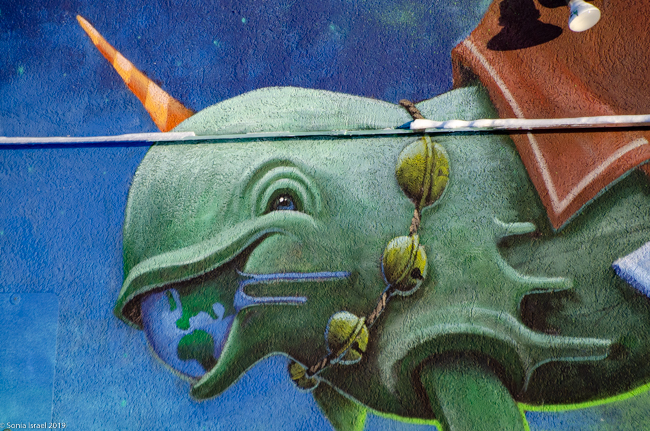
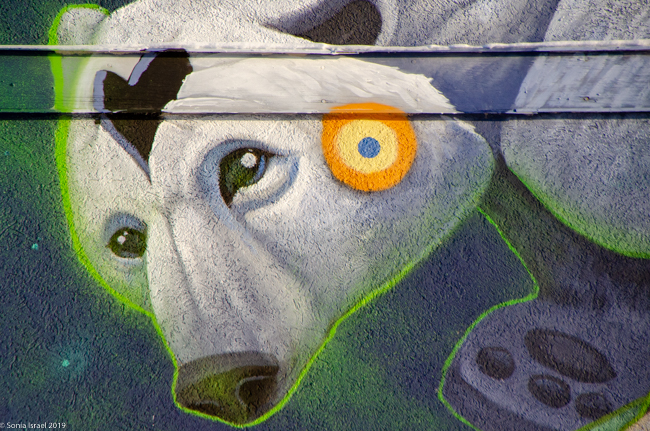
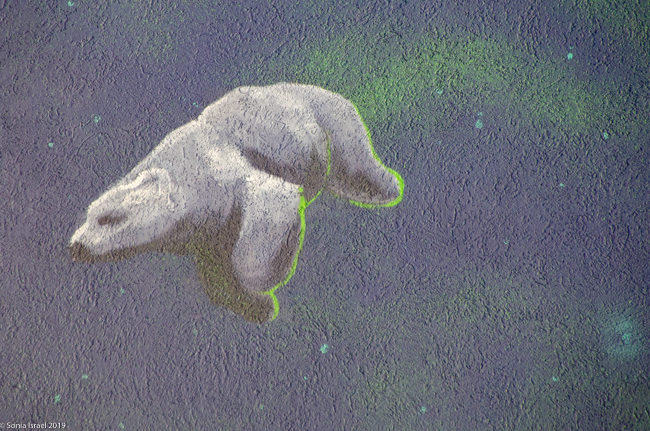
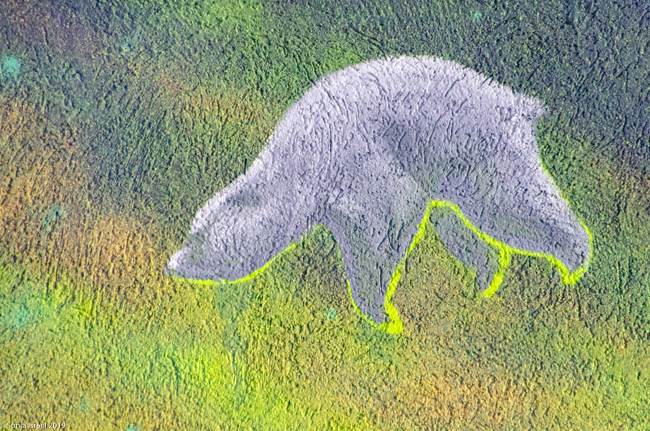
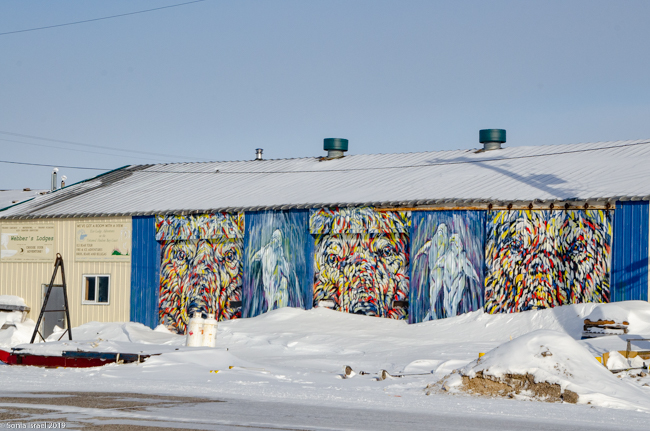
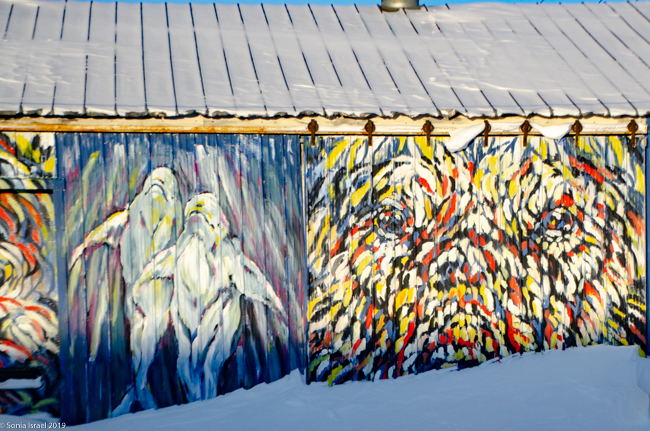
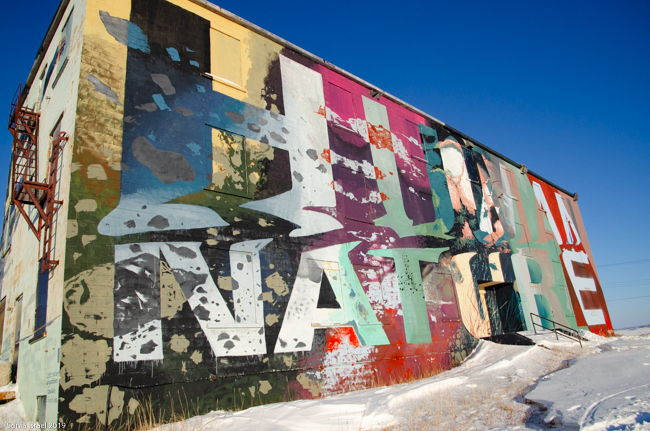
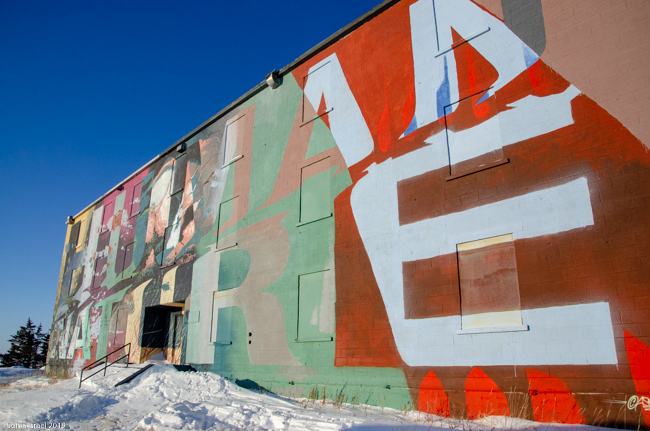
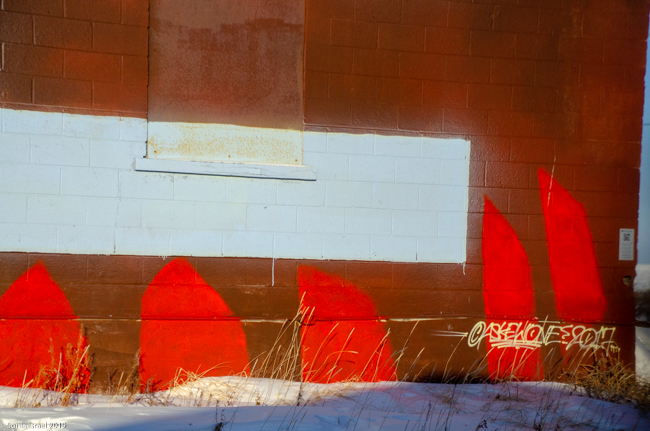
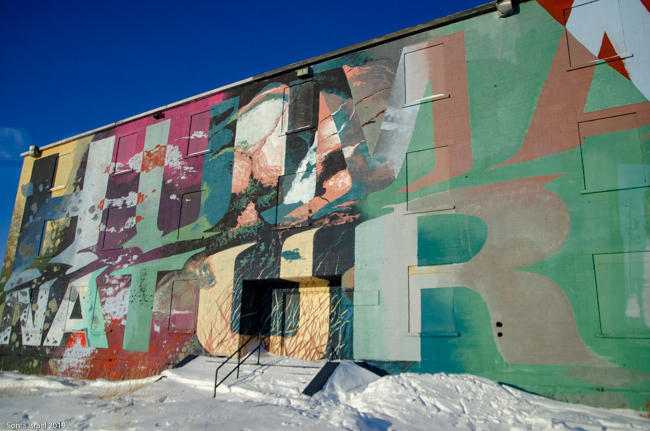

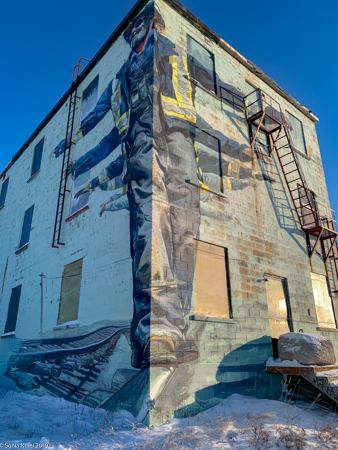
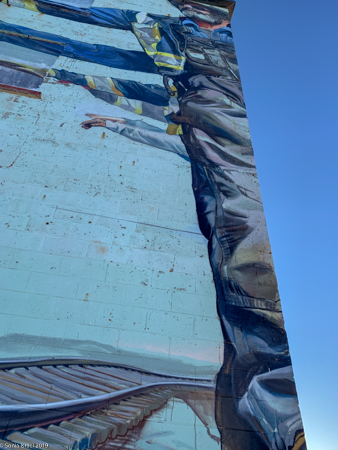
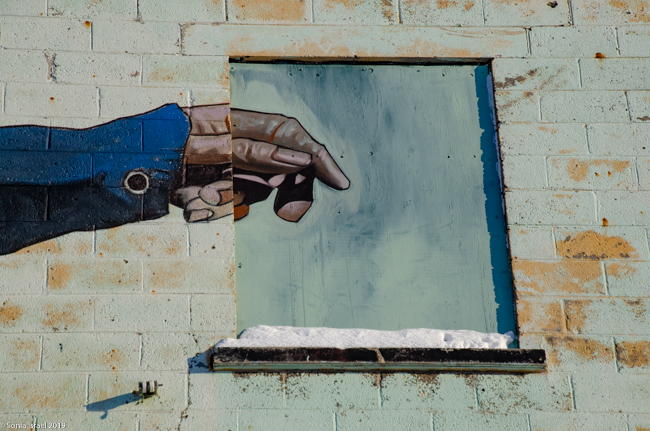
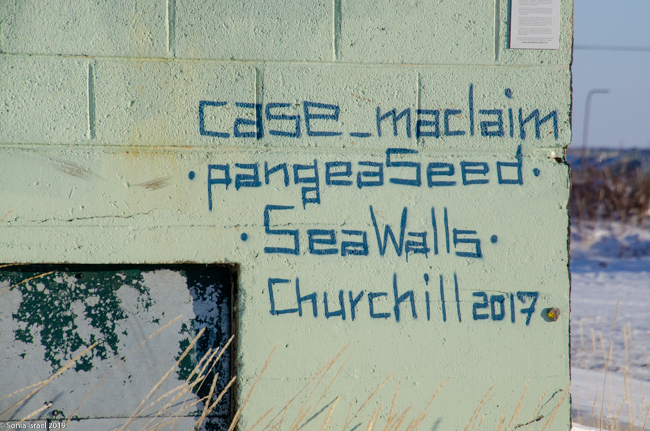
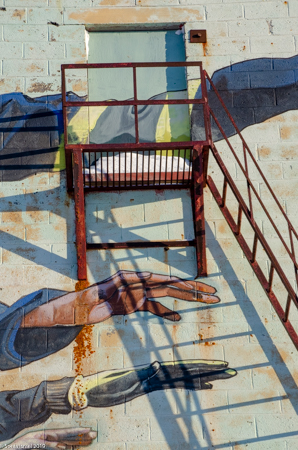
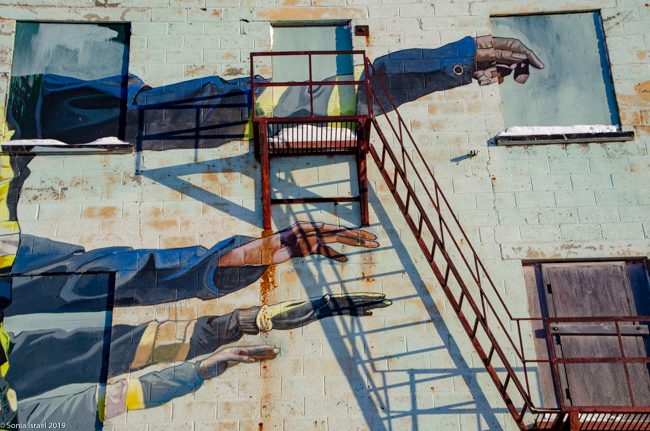
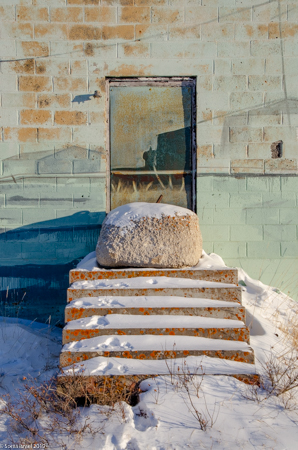
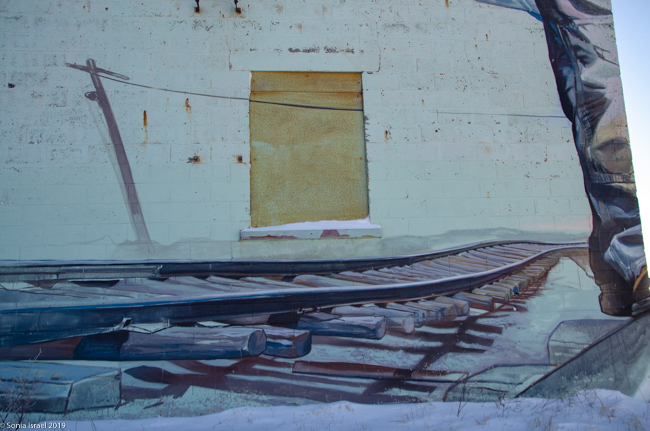
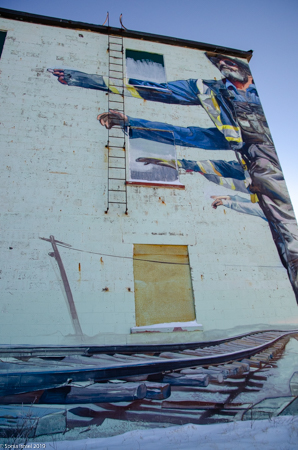
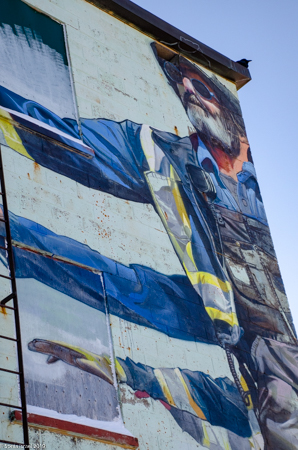
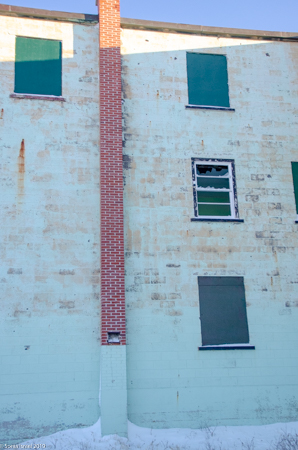
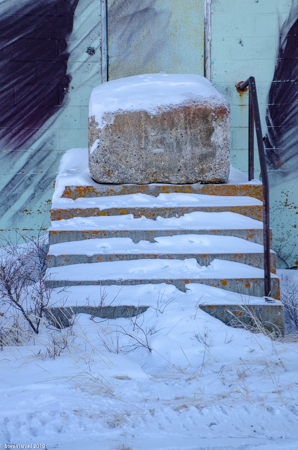
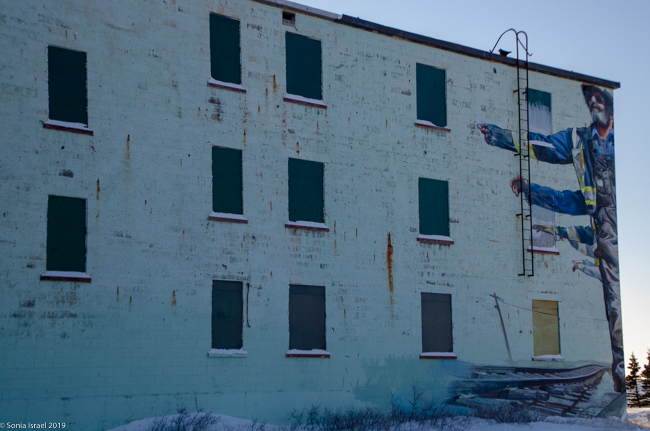

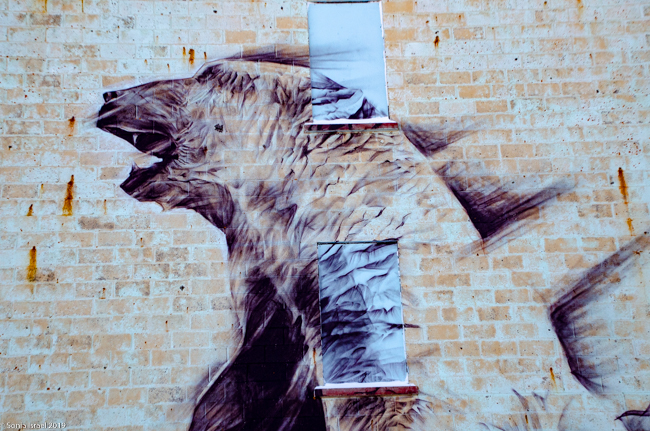
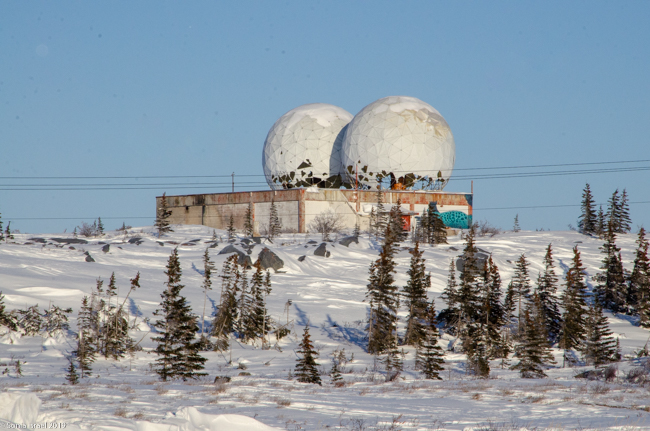

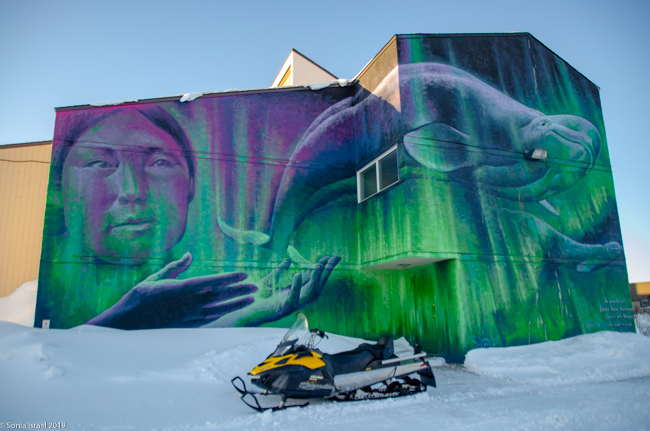
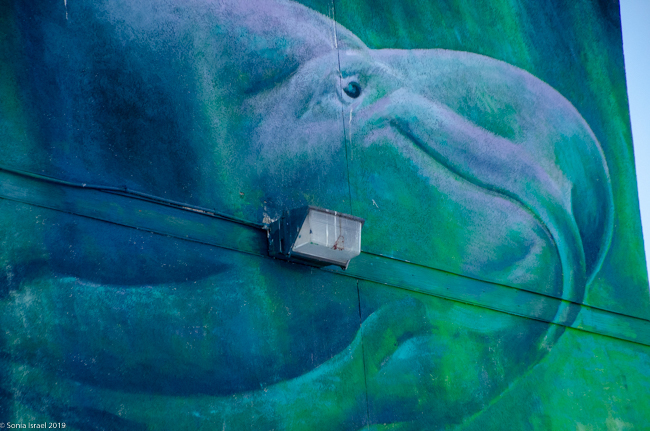
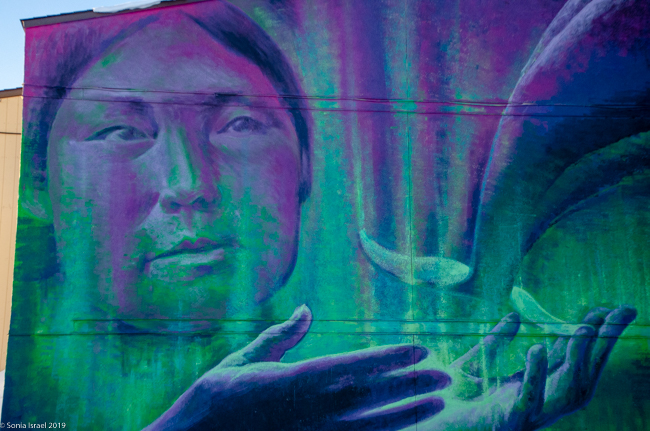
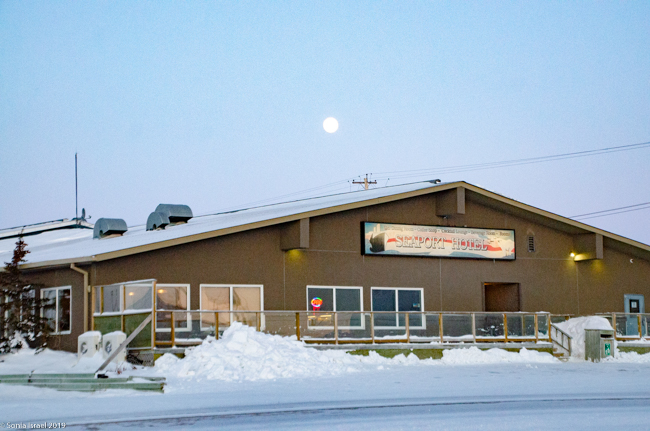
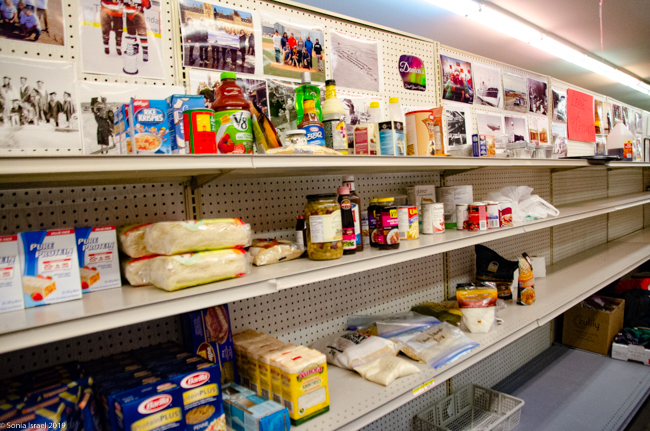
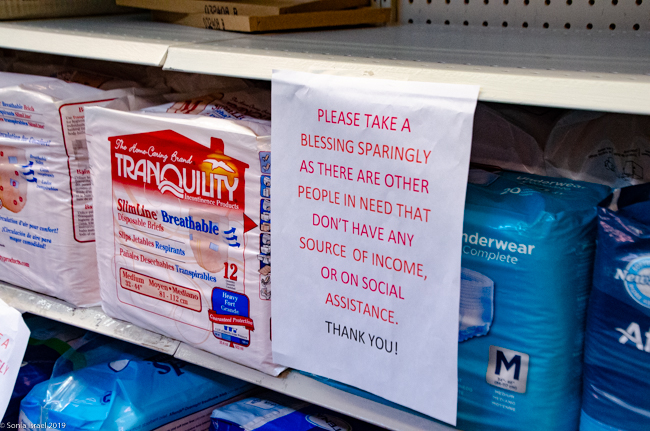
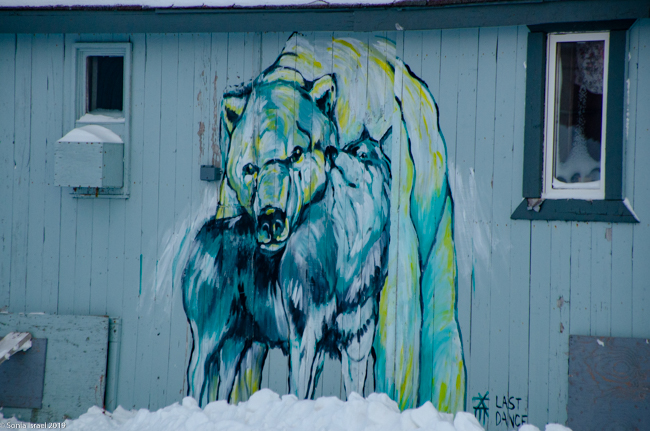
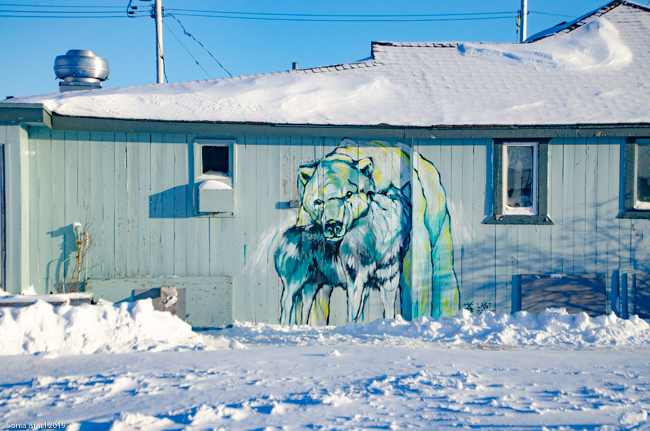
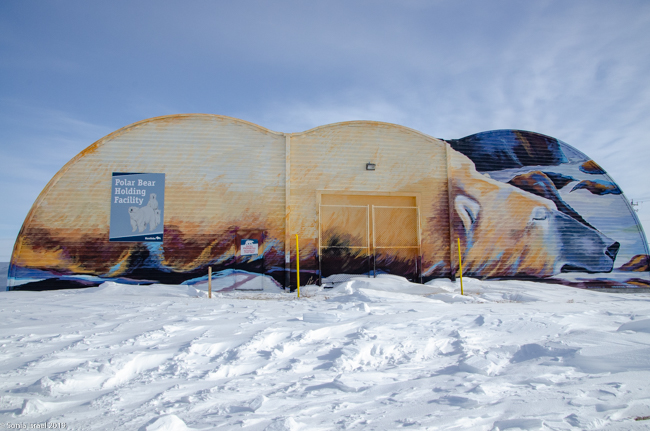
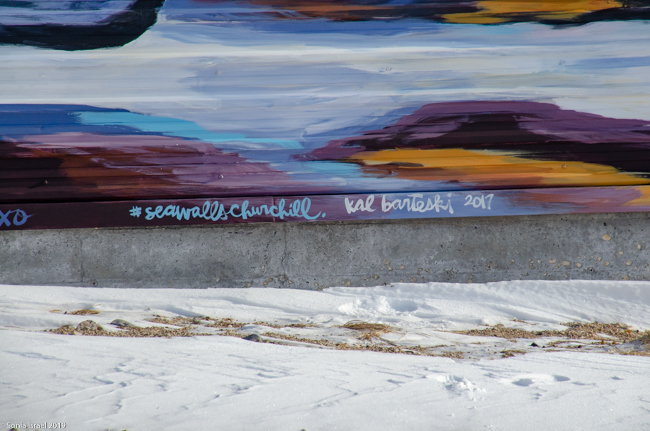
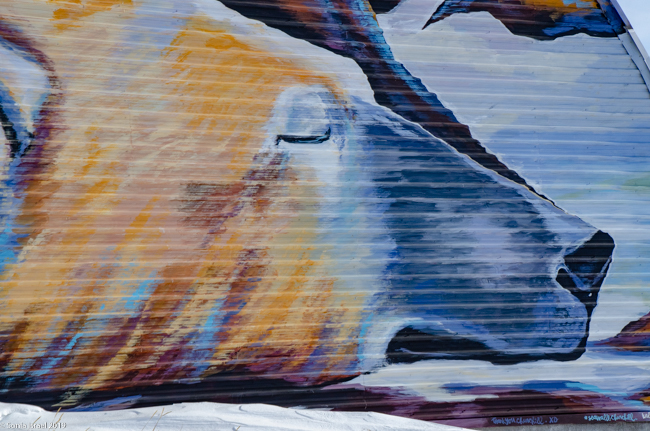
Cheryl
Fascinating to learn all of this, thank you Sonia!
Doil Montgomery
Thank you so much for sharing your experiences in Churchill. The art and your information about the murals, the people who live there and the recent emergency caused by global warming gives another reason to ask people to pause and consider our role in changing the environment. It also gives another example of how unwise the white men are to other people and the environment in their continued destruction of the physical world. Those who attended the photography meeting in Las Vegas this Spring got a similar message from the presenters there. Thanks for keeping that message going.